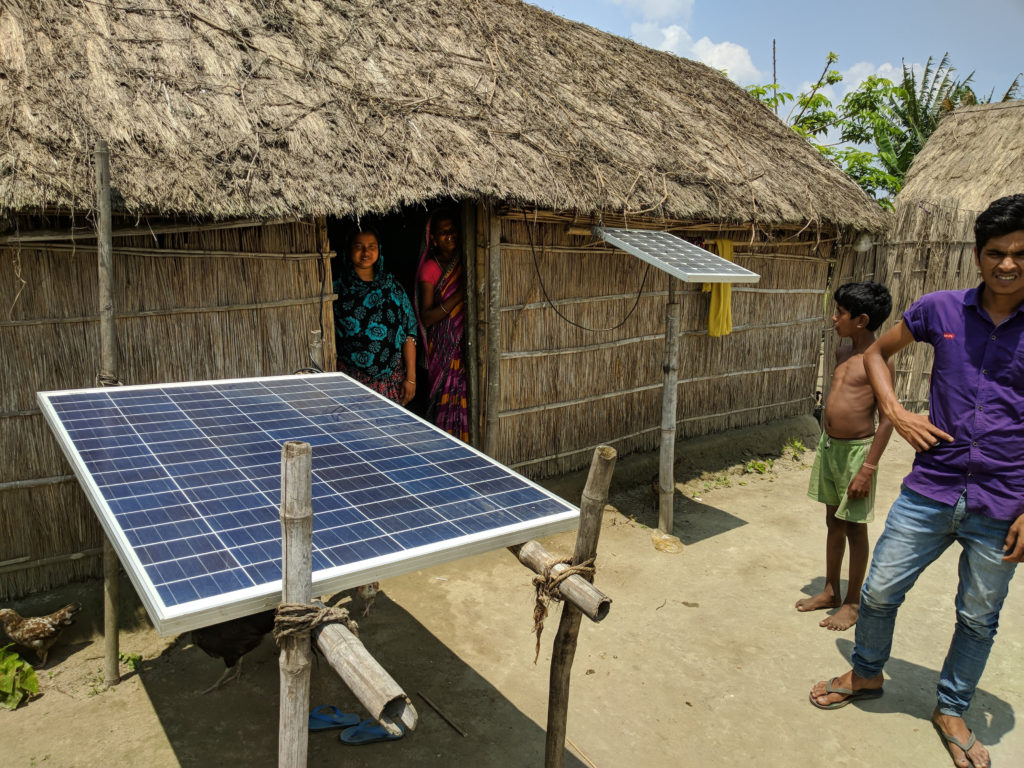Renewable Energy’s Role in the Electrification of Asia
Technicians of State Grid Corp. of China check power transmission facilities in Zhoushan. Source: Getty Images
31 May 2021 – by Eric Koons Comments (0)
Access to electricity in Asia is not only a requirement for basic quality of life, but also essential for promoting renewable energy growth. While great strides have been made in expanding access to electricity in Asia, there is still a room for improvement. 350 million people only gained electricity access between 2011 and 2017. Most of these people live in rural areas that have poor energy infrastructure and receive insufficient funding. While conventional energy systems struggle to meet demand in these regions, these areas area also some of the most suitable for distributed renewable energy systems. This represents a significant opportunity for renewable energy investors.
So, what is being done in Asia to expand rural access to electricity, and which countries are leading the way?

Vietnam’s Successful Energy Program
Vietnam has had a long-term dedicated grid extension strategy, which boosted the household electrification rate from 2.5% in 1975 to 96.3% in 2009. This increased energy access for more than 80 million people. A number of development partners have supported the government, with the World Bank contributing more than USD $700 million. Vietnam invested around USD $2 billion in developing and improving the rural power grid between 2000 and 2015.
The program prioritized rice producing regions, which has led to Vietnam becoming the world’s second largest rice producer. In the late 1990s the priority shifted towards poor households, remote communes, and villages.
How Vietnam Became a Renewable Energy Leader in Asia
Vietnam’s rural electrification success is based on three key factors:
1) Strong commitment by the central and local governments and state-owned utility companies
2) Sharing roles and responsibilities, including the costs of electrification, by all stakeholders, supported by development institutions
3) The introduction of unified national technical standards for energy infrastructure
Since 2000, the use of off-grid, distributed renewable energy systems has significantly increased in rural areas. The government is still working towards its target of 100% electrification of rural households by 2025 and has become a renewable energy leader in Asia.
Bangladesh is a Case Study on Increasing Energy Access
Bangladesh has taken a more renewable approach to electrification. Their Solar Home System Program by the Infrastructure Development Company Limited (IDCOL) is the world’s largest domestic solar program. It currently involves 12% of the population.
In partnership with the World Bank, the Bangladesh government set up IDCOL in 1997. Its mission is to provide funding and technical assistance to private companies and consumers of renewable energy infrastructure projects, including distributed generation. As of mid-2019 IDCOL’s total investment in these efforts approached USD $700 million. They have installed 4.2 million solar home systems, benefiting 18 million people.
IDCOL aims to add another 1.25 GW of solar pumps, 6 million more solar home systems (200 MW) and 50 mini-grids by 2025. This is a key step for continuously improving electricity access and reaching their 2030 goal of replacing every traditional cook stove in the country.
This is a great example of how governments and financial institutions can partner to drive change to both increase renewable energy and access to electricity. Their heavy use of distributed power was an essential component in achieving success.

How China Achieved 100% Electrification
In 2015, China announced that it had achieved full electrification for its entire 1.4 billion population. China attacked rural electrification in two waves. They first provided electricity to 97% of the population by the late 1990s with a combination of grid extension, and small hydropower and coal-fired power plants (~50 MW) integrated into local microgrids. For the final 3%, China focused on extending rural grids, and where the grid could not reach people cost effectively, they used off-grid renewables.
The program was successful due to strong policy leadership and investment. Local authorities also played a key role in coordinating the highly decentralized electricity systems. The central government provided investment support ranging from 20% to 80% in the poorest areas.
Achieving Universal Energy Access Requires Significant Funding
According to the IEA, achieving global universal access to electricity by 2030 will require investments of up to USD $52 billion annually. Current investment in the Asia Pacific region is well below what is needed.
Global investment in off-grid solutions increased from an estimated USD $210 million in 2014 to USD $380 million in 2015. This is only a small fraction of the total investment in energy (1.3%).
Although a combination of public and private institutions are addressing the gap in funding for decentralized energy projects, financing for end-users remains a challenge in the Asia Pacific region. Because of the resource-intensive nature of distributed renewable energy projects in Asia, solutions often remain in the hands of non-profit organizations and social enterprises. This needs to change if serious improvements to grid access are to be achieved.

Distrusted Renewable Energy as a Solution to electricity access
Distributed renewable energy is certainly playing a key role in enabling access to electricity. However much remains to be done and funding continues to be one of the main hurdles.
There are certainly massive opportunities for renewable energy investment in Asia. However, to enable such investment, countries such as Vietnam, Bangladesh, China and India have shown the importance of government involvement, both at federal and local levels.

by Eric Koons
Eric is a passionate environmental advocate that believes renewable energy is a key piece in meeting the world’s growing energy demands. He received an environmental science degree from the University of California and has worked to promote environmentally and socially sustainable practices since. Eric’s expertise extends across the environmental field, yet he maintains a strong focus on renewable energy. His work has been featured by leading environmental organizations, such as World Resources Institute and Hitachi ABB Power Grids.
Read more


